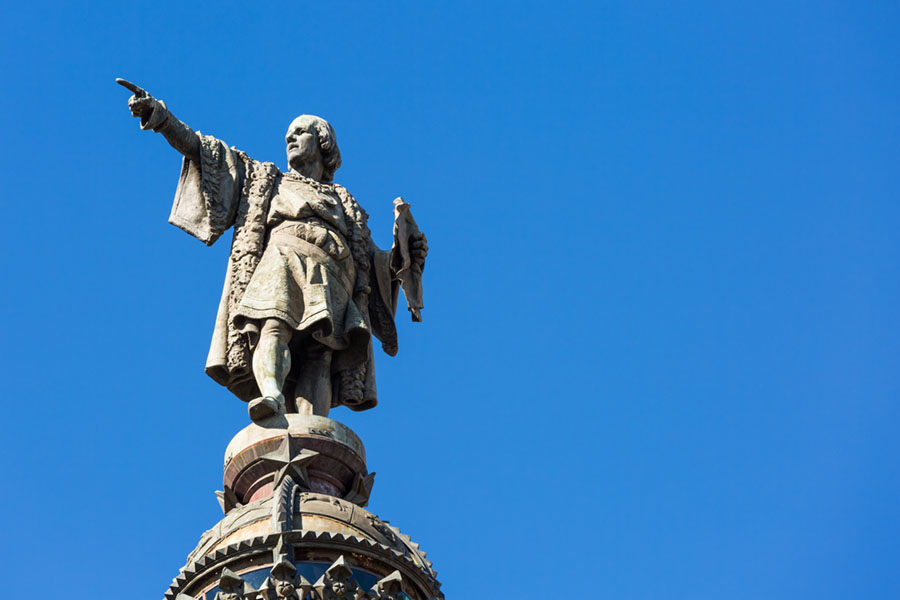
Christopher Columbus and Genocide
Christopher Columbus and Genocide Are Deeply Interrelated as His Invasion of the Americas Led to the Spread of Disease and Millions of Violent and Innocent Deaths.
There is no doubt that Christopher Columbus and genocide are not correlated in the history books used to teach children today.
However, Christopher Columbus was responsible for the decimation of the native population of the North American continent.
He was responsible for countless deaths due to diseases brought to people who had never before been exposed to them. Was he responsible for a genocide?
The people in the Americas died quickly, in huge numbers; the populations were heavily damaged.
Christopher Columbus and genocide are very closely related, but our children are not taught this in the brainwashing public schools of today.
Columbus first landed in the Caribbean Islands and met a native population that was trusting and naïve.
The problem was, these people he met were also adorned in gold jewelry. The greed of these conquerors eventually resulted in the enslavement of the native people.
Why aren’t we taught this today? Why do we even celebrate a Columbus Day? Could it be the similarities between Columbus and the elite plan for population reduction are closely related and need to be kept secret?
The Decimation
The decimation of these people occurred initially through diseases spread by simple contact, including sailors raping the native women.
The native people had never been exposed to these diseases before; their bodies had no immune response to them, and the effects were disastrous.
Columbus initially attempted good relations with the natives, then enslaved them for the purposes of work and sex.
On his second voyage; he brought armed troops and used them to dominate the native populations.
These men would rape and pillage as they pleased; native spears were no match for firearms, and the people were slaughtered.
Columbus and genocide go hand in hand. He and his men were dressed in armor; they rode on horseback and had trained dogs.
The native people had no chance against these men. They were slaughtered.
The acts committed by these men were acts of genocide. Christopher Columbus and genocide go together without question.
On his second voyage, Columbus enslaved and murdered numerous people in a place called Hispaniola.
He shipped many off to slavery in Europe, resulting in large amounts of death on route.
The remaining people were required to bring gold to Columbus and his men. Those who refused to bring gold were punished by having their hands cut off.
When the gold ran out and the people fled, they were hunted and killed by Columbus and his men.
The natives of this area, the Tiano, were facing treacherous acts at the hands of Columbus and genocide.
Eventually, they started committing mass suicide and also killed their children to prevent the abuse and savagery Columbus and his men would inflict.
When Columbus arrived, the Tiano population was estimated to be about a quarter of a million people.
The brutal killings, disease, suicides and slavery left that population at only a few hundred within 60 years.
We never heard a word about this during the years of public schooling we had, nor do our children today.
The similarities between Columbus and his horrific acts of genocide and the plans the elite have for reducing the world’s population by 90%, are shocking to say the least.
Columbus
During the voyages Columbus took across the Atlantic, he was guilty of atrocities against humanity.
Columbus was the mastermind of the genocide. He was responsible for decreasing a population from a quarter million people to a few hundred.
If it were not for Columbus and genocide, the Tiano people may have had a chance to be a thriving people in the world.
Learn the lesson and be prepared.

 My First Amazing Ayahuasca Experience
My First Amazing Ayahuasca Experience  Pine Needle Tea
Pine Needle Tea  The REAL Controllers of Humanity: The Papal Bloodlines
The REAL Controllers of Humanity: The Papal Bloodlines  Is it Global Warming or Cooling?
Is it Global Warming or Cooling?  Gun Rights and Obama Examined
Gun Rights and Obama Examined